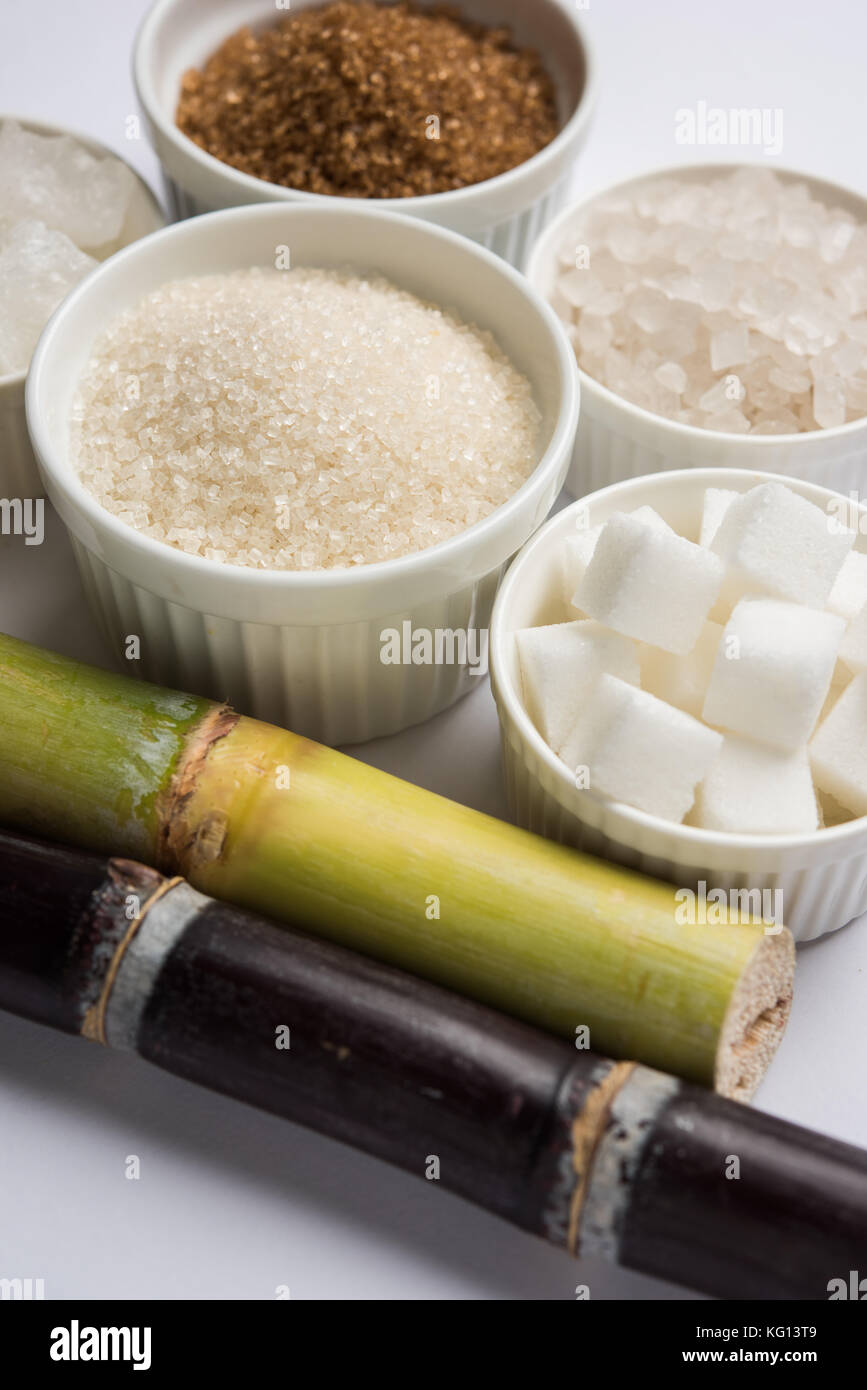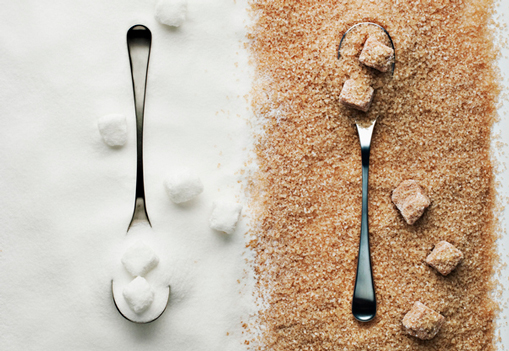Discover All Regarding Sugar Cane: From Production Techniques to Product Innovations
Sugar cane is a crop with both historical importance and modern importance. Its farming has developed from conventional techniques to contemporary methods that fulfill today's agricultural needs. This evolution includes ingenious handling strategies that transform the cane into a range of products. As the market deals with environmental difficulties, brand-new sustainable methods are arising. The complexities of sugar cane manufacturing and its future in worldwide markets present appealing questions worth exploring further.
The History of Sugar Cane Farming
Although sugar cane is frequently connected with tropical climates, its growing has a rich background that goes back countless years. Coming From Southeast Asia, the earliest records of sugar cane's use go back to around 8000 BCE, where it was eaten for its sweet taste. By the initial centuries, it infected India, where it ended up being essential to regional societies. The technology to take shape sugar arised in India by the fifth century CE, marking a significant turning point in sugar production.With the growth of trade paths, sugar cane found its method to the Center East and, eventually, Europe. The facility of plantations in the Caribbean throughout the 16th century changed the worldwide sugar market, driven mostly by colonial growth. As sugar came to be an in-demand asset, its cultivation formed economies and societies, preparing for modern manufacturing strategies that developed with the advancement of farming and innovation.
Conventional Farming Techniques
As sugar cane farming advanced with history, traditional farming techniques arised as foundational methods that shaped its manufacturing. These approaches, often given with generations, included using handbook tools such as hoes and machetes for planting and collecting. Farmers generally prepared the dirt by hand, using plant rotation and intercropping to keep soil fertility and control bugs. Water administration was vital, with many traditional cultivators relying upon natural irrigation systems and rainwater harvesting.Planting was many times to correspond with seasonal rainfalls, assuring optimal development conditions. Generally, sugar cane was grown in rows, permitting less complicated maintenance and harvesting. Harvesting was done manually, needing knowledgeable labor to decrease damages to the stalks. Overall, standard farming techniques highlighted sustainability and a deep understanding of the neighborhood setting, forming an essential part of the cultural heritage surrounding sugar cane farming. These techniques prepared for future developments in sugar manufacturing.
Modern Agricultural Practices
Modern agricultural methods have progressively incorporated precision farming strategies to improve sugar cane manufacturing. sugar cane products. These methods make use of data-driven approaches to enhance inputs and enhance returns while minimizing ecological influence. Additionally, lasting insect administration methods are being adopted to safeguard crops without jeopardizing ecological equilibrium
Precision Farming Strategies
Precision farming techniques stand for a transformative approach to farming, leveraging technology to improve productivity and sustainability in sugar cane production. By utilizing tools such as GPS, remote sensing, and data analytics, farmers can keep an eye on plant wellness, soil problems, and water use with extraordinary precision. This data-driven strategy enables targeted interventions, minimizing waste and enhancing resource allowance. Drones and satellite imagery promote real-time analyses, making it possible for growers to respond swiftly to emerging concerns or adjustments in environmental problems. Furthermore, precision farming enhances return projecting and boosts decision-making processes, eventually bring about far better crop monitoring. Therefore, sugar cane producers can achieve greater performance and productivity while decreasing their ecological footprint, adding to the general innovation of contemporary farming techniques.

Sustainable Bug Monitoring
Effective administration of pests is vital for preserving the wellness and performance of sugar cane plants. Sustainable pest management techniques concentrate on reducing chemical inputs while making best use of eco-friendly balance. sugar cane products. Integrated Parasite Monitoring (IPM) is a popular technique, integrating organic control, habitat adjustment, and making use of resistant sugar cane ranges. Farmers are significantly using beneficial pests and all-natural predators to suppress insect populaces, decreasing reliance on artificial pesticides. Tracking pest levels with traps and hunting permits prompt interventions, making sure that control measures are used only when essential. Furthermore, crop turning and intercropping boost biodiversity, more diminishing pest outbreaks. By embracing these sustainable practices, sugar cane producers can maintain crop yield while website link promoting environmental stewardship and reducing the negative impacts related to traditional pest control methods
Processing Sugar Cane: From Area to Manufacturing facility
The detailed trip of sugar cane from area to manufacturing facility includes a number of important actions that transform this vivid plant right into a resources for sugar manufacturing. After collecting, sugar cane is rapidly transported to the handling center to reduce sucrose loss. The initial step at the factory is washing the cane to remove contaminations, adhered to by squashing to draw out the juice. This juice undergoes clarification, where it is heated and treated with lime to eliminate strong particles and impurities.Once made clear, the juice is focused through dissipation, leading to syrup. The syrup is after that crystallized by cooling and adding seed crystals, causing the development of sugar crystals. Adhering to formation, the sugar undertakes centrifugation to divide it from molasses. Eventually, the sugar is dried, packaged, and gotten ready for distribution. Each action in this process is vital for guaranteeing the high quality and effectiveness of sugar manufacturing.
Sugar Cane Products and Their Applications

Sugar and All-natural Sugars
Usually neglected, sugar and all-natural sugars derived from sugar cane play a vital function in the food and drink sector. These products, including sucrose, molasses, and raw sugar, provide a range of flavors and functionalities that enhance various food products. Sucrose, the most common sugar, is widely made use of for its sweetening residential properties, while molasses contributes deepness and intricacy to baked products and sauces. All-natural sugars from sugar cane are favored for their marginal processing and perceived wellness advantages compared to sweetening agents. In enhancement, innovations in sugar cane handling have actually brought about alternatives like fluid sugar and focused cane juice, providing to diverse consumer Learn More choices. Generally, sugar cane-derived sweeteners are essential to flavoring, preserving, and boosting food experiences.
Biofuels and Renewable Resource

Sustainability in energy production has actually progressively transformed attention to sugar cane as a practical resource for biofuels. This exotic plant, abundant in sucrose, can be transformed into ethanol, an eco-friendly fuel that reduces greenhouse gas discharges compared to nonrenewable fuel sources. The fermentation process utilizes molasses, a by-product of sugar manufacturing, making the most of source effectiveness. In addition, sugar cane's biomass, including bagasse and leaves, can be transformed into bioenergy, adding to a round economic situation. Different advancements in handling techniques enhance the return of biofuels, making sugar cane an appealing choice for power diversification. Furthermore, the growing need for lasting energy resources drives research study into improving cultivation practices and minimizing the carbon impact of biofuel manufacturing, placing sugar cane as a vital gamer in the eco-friendly power landscape.
Technologies in Sugar Cane Sustainability
As the global need for sugar boosts, advancements in sugar cane sustainability have actually become important to meet both ecological and financial obstacles. Modern farming techniques are being applied to reduce water usage, enhance soil health and wellness, and decrease chemical inputs. Techniques such as precision farming make use of information analytics and technology to optimize resource usage and boost crop returns sustainably.Additionally, the development of genetically modified sugar cane ranges intends to boost resistance to bugs and ecological stress factors, causing greater performance with less inputs. Waste monitoring practices are additionally developing; by-products from sugar cane handling are being transformed into bioenergy, decreasing dependence on fossil fuels.Furthermore, partnerships between farming stakeholders and ecological companies are cultivating techniques that advertise biodiversity and ecosystem health. These developments not only help reduce the environmental impact of sugar cane manufacturing yet likewise produce a much more durable and sustainable market for the future.
The Future of Sugar Cane in Global Markets
While worldwide sugar consumption proceeds to climb, the future of sugar cane in global markets deals with both chances and obstacles. The boosting need for biofuels and sustainable products offers a considerable possibility for sugar cane manufacturers, as the plant can be utilized for ethanol production and other green choices. On top of that, technologies in handling techniques may enhance performance and minimize costs, making sugar cane extra affordable against other sweeteners.However, obstacles such as environment change, fluctuating market prices, and changing consumer preferences toward healthier options complicate the landscape. Profession plans and tariffs can influence the worldwide market characteristics, affecting farmers' earnings. As stakeholders navigate these intricacies, collaboration amongst manufacturers, federal governments, and scientists will be crucial in adapting to the progressing market. The future of sugar cane rests on stabilizing these possibilities and difficulties to protect its area in a swiftly transforming global economy.
Regularly Asked Inquiries
Just How Does Sugar Cane Impact Citizen Ecosystems and Biodiversity?
The growing of sugar cane try this web-site significantly affects neighborhood ecological communities and biodiversity. Monoculture techniques can bring about environment damage, while chemical use might harm non-target varieties, ultimately interfering with eco-friendly equilibrium and reducing types splendor in impacted areas.
What Are the Wellness Consequences of Consuming Sugar Cane Products?
The health and wellness impacts of consuming sugar cane items consist of prospective benefits like energy increases and anti-oxidants, but extreme intake might cause weight gain, dental issues, and increased risk of diabetic issues, urging small amounts in intake.
Exist Any Type Of Alternatives to Sugar Cane for Sugar Production?
Alternatives to sugar cane for sugar production consist of sugar beet, maple sap, and coconut hand sap. These sources offer similar sweet taste and can be grown in different climates, providing varied choices for sugar production worldwide.
Exactly How Is Sugar Cane Impacted by Climate Modification?
Climate modification substantially influences sugar cane, creating transformed rains patterns, enhanced temperatures, and enhanced insect stress. These factors can reduce returns and affect overall top quality, motivating the demand for adaptive agricultural methods to guarantee sustainability.
What Are the Labor Conditions for Sugar Cane Employees Worldwide?
Labor conditions for sugar cane workers globally differ considerably, commonly defined by reduced earnings, lengthy hours, and insufficient precaution. Several face exploitation and severe functioning environments, especially in establishing nations reliant on sugar cane manufacturing.